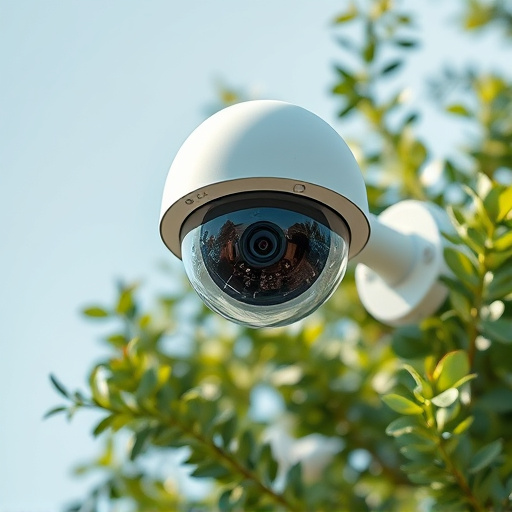When choosing between fake dome and bullet cameras for a mock surveillance system, consider their strengths: dome cameras offer wide-angle coverage but less detail, while bullet cameras provide superior resolution, night vision, and zoom but are less visible. Select based on your security needs and desired concealment level. Strategically map out surveillance zones in residential or commercial spaces, focusing on entry points and high-risk areas. After installation, test and optimize camera performance under simulated conditions to ensure both realism and deterrent effect.
“Uncover the ultimate guide to installing a mock surveillance system, perfect for enhancing security without breaking the bank. Explore the world of fake dome and bullet cameras, understanding their unique benefits in ‘Understanding Your Options’. Then, master the art of planning your installation zone in ‘Planning the Installation’. Our step-by-step ‘Hands-On Guide’ ensures a seamless setup, followed by tips to ‘Test and Optimize’ for peak performance. Discover the secrets to an effective fake surveillance system.”
- Understanding Your Options: Fake Dome vs Bullet Cameras
- Planning the Installation: Mapping Out Your Surveillance Zone
- Hands-On Guide: Step-by-Step Mock System Setup
- Testing and Optimization: Fine-Tuning Your Fake Surveillance System
Understanding Your Options: Fake Dome vs Bullet Cameras
When considering a mock surveillance system, one of the key decisions is choosing between fake dome cameras and bullet cameras. Each option has its unique advantages and disadvantages. Fake dome cameras are known for their discreet appearance, resembling standard security cameras, which can blend seamlessly into various environments without drawing attention. They often come with a wide field of view, offering a comprehensive coverage area. However, they might lack advanced features like zoom or motion detection compared to some bullet cameras.
On the other hand, bullet cameras are designed for clear and detailed surveillance. These cameras typically offer higher resolution, infrared capabilities for night vision, and adjustable zoom lenses, making them ideal for identifying individuals or objects at a distance. Despite their technical superiority, bullet cameras might be more noticeable due to their distinct appearance, potentially raising awareness among potential intruders. The choice between the two depends on your specific security needs and the level of discretion you require for your mock surveillance system.
Planning the Installation: Mapping Out Your Surveillance Zone
When planning a mock surveillance system installation, mapping out your surveillance zone is the first critical step. Identify and delineate the areas that require monitoring using either fake dome or bullet cameras. Consider factors such as lighting conditions, obstructions like trees or buildings, and potential blind spots to ensure optimal camera placement. A well-thought-out layout ensures comprehensive coverage without unnecessary equipment.
For instance, in a residential setting, you might focus on entry points like doors and windows, outdoor pathways, and any vulnerable areas where security concerns are higher. In contrast, a commercial space may require surveillance of high-traffic areas, valuable assets, and critical infrastructure to deter potential threats or criminal activities. This strategic planning not only enhances the effectiveness of your mock surveillance system but also aligns it with your specific security needs.
Hands-On Guide: Step-by-Step Mock System Setup
Setting up a mock surveillance system is an excellent way to practice and learn about security measures without the need for actual cameras. This hands-on guide will walk you through the process of installing a realistic-looking yet entirely fake surveillance setup, utilizing both dome and bullet-style cameras.
Begin by selecting your camera types; fake dome cameras offer a subtle look suitable for indoor spaces, while bullet cameras are more visible, ideal for exteriors. Mount these strategically around the area to be monitored, ensuring they mimic real security practices. Connect each camera to a central control panel or recording device using appropriate cables, replicating the wiring of a genuine system. This step ensures all cameras feed into one hub, allowing you to monitor and record footage from multiple angles.
Testing and Optimization: Fine-Tuning Your Fake Surveillance System
After installing your mock surveillance system, it’s crucial to test and optimize its performance for maximum effectiveness. Start by simulating various scenarios using real-world conditions – this could involve mimicking different lighting levels or angling the “cameras” to emulate various viewing angles. The goal is to ensure that the fake dome or bullet cameras accurately capture what a genuine security system would, without drawing unnecessary attention.
During testing, pay close attention to the image quality and clarity of the feeds. Adjusting the resolution settings can significantly improve detail, especially if you’re aiming for a more realistic look. Experiment with different positioning and arrangements to find the best layout that provides comprehensive coverage while remaining discreet. This fine-tuning process ensures your mock surveillance system not only appears authentic but also functions optimally in deterring potential intruders.
In conclusion, choosing between fake dome or bullet cameras for your mock surveillance system depends on your specific needs. After understanding the options and planning your installation, our step-by-step guide ensures a seamless setup. Testing and optimization are crucial to fine-tuning your system, enhancing its realism, and achieving the desired level of security simulation. With the right approach, you can create an effective mock surveillance environment using either type of camera.
